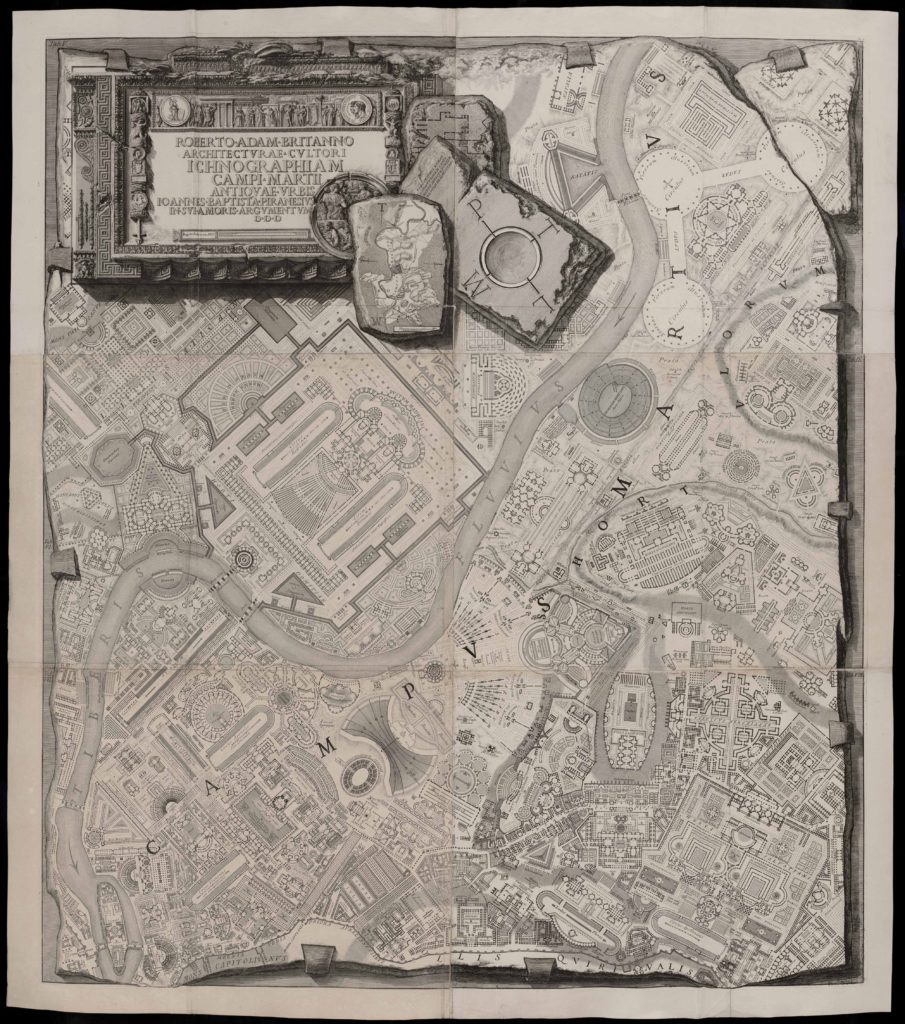History records that the psychedelic properties of LSD were discovered by Albert Hoffman in 1943, but anything more than the briefest glance at Piranesi’s Il Campo Marzio dell’antica Roma (The Campus Martius of Ancient Rome) suggests that some kind of extremely potent acid must have circulating among Italian antiquarians back in the 1760s.
In producing his map of ancient Rome the artist, architect and antiquarian Giovanni Battista Piranesi (1720-1778) did an incredible job of tracking down, measuring and plotting structures that still stood in his day, then backed up his on-site research with meticulous trawling through ancient (and not so ancient – he straight up plagiarised some stuff from other antiquarians) documents for further info. Having done all that however he proceeded to fill in the blanks with the wildest, most hallucinatory, architectural bat-shittery imaginable, transforming Rome from a city where people actually lived and worked into a vast field of palaces, monuments, circuses, gardens, canals, lakes and god-knows what else. He even left off a few real features (where the hell is the Via Lata?) to make room for his architectural fever-dreams. It’s not a historical reconstruction, it’s an Imperial Disneyland with Marcus Mouse and Domitian Duck.
All that said, we shouldn’t be too harsh on him. Archeology as we understand it didn’t exist in the 1700s, and Piranesi was – above all else – a guy trying to earn a living. A map with big blank areas would be far less likely to attract the interest of a wealthy Grand Tourist than one full of fascinating – albeit entirely fictional – detail. It also cannot be denied that the piece is magnificent. I’d happily display it on my wall despite its historical shortcomings.
An interesting footnote is that there are two versions of the map. Piranesi actually went back and edited his depiction of the circuses, shortening the central spina (spinae? I really must brush up on my Latin plurals…) and replacing his straight depiction of the starting gates (the carceres) with curved ones. This was apparently down to evidence from the spectacularly well preserved Circus of Maxentius on the Appian Way south of Rome. Clare Hornsby delivered an interesting lecture on the subject at the English School in Rome back in 2022 which can be viewed here on YouTube.
And of course the whole thing was inspired by the Forma Urbis Romae – the incredibly detailed map of the city carved into marble slabs around 205 AD. This covered central Rome at such a level of detail that the floor plans of individual buildings – including features such as pillars and staircases – were included, and it was all clearly labeled with street and building names.
Such an incredible historical resource could – of course – not be permitted to survive and the majority of it was burned to make lime in the middle ages. About 10% of it survives in the form of thousands of fragments, and archeologists have been trying to fit them back together for the last few centuries in the most frustrating game of jigsaw ever devised.
Through such seas of ignorance, archeology splashes on!


